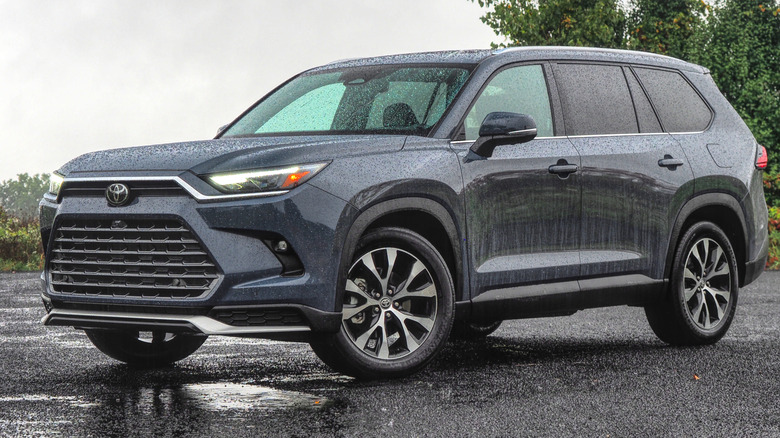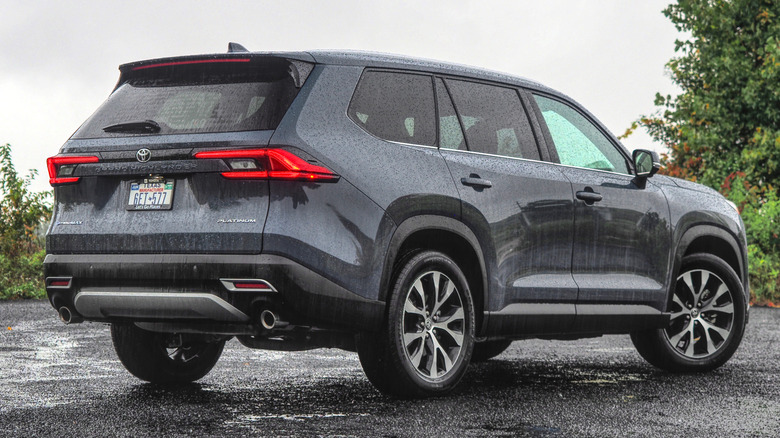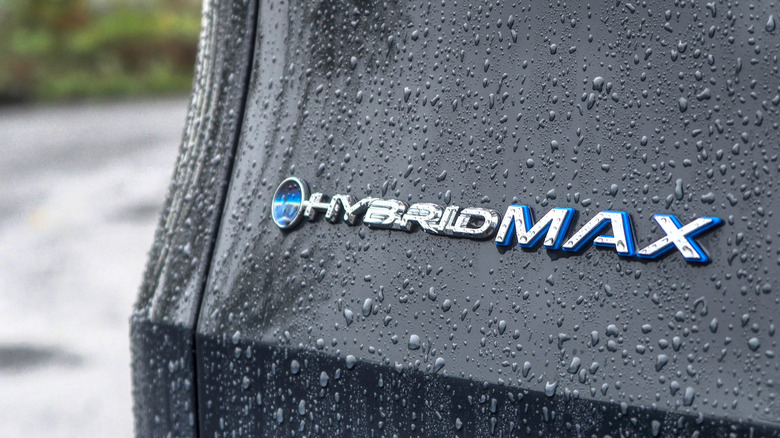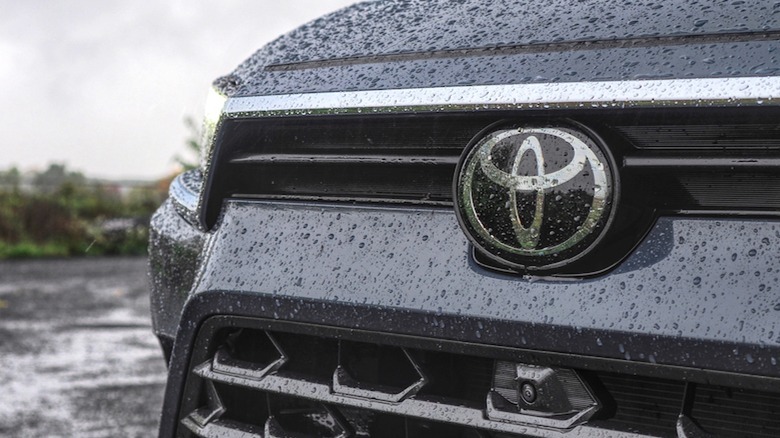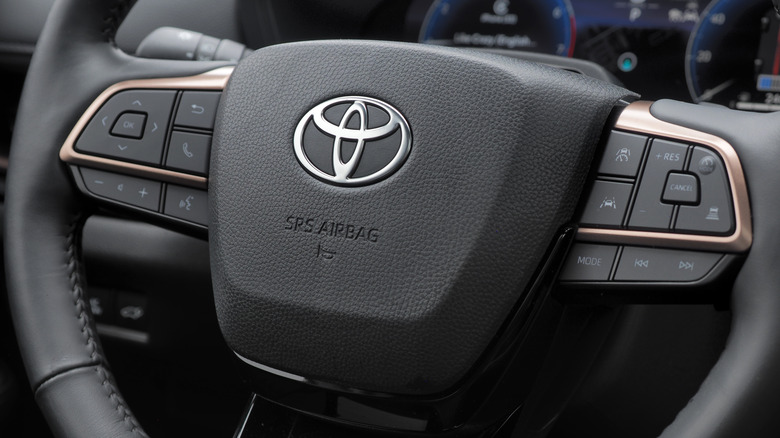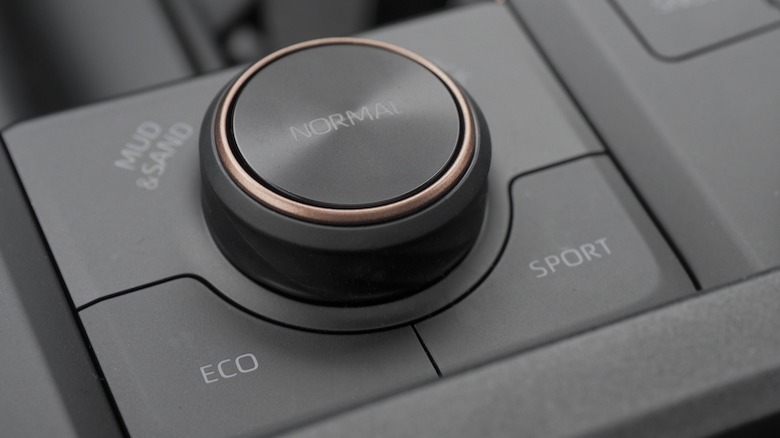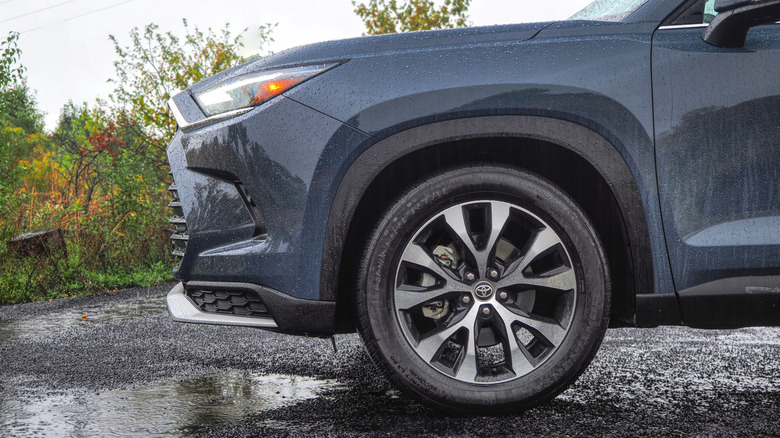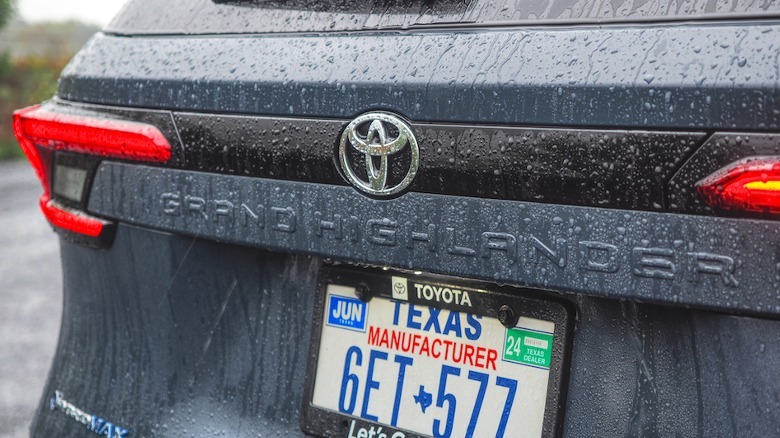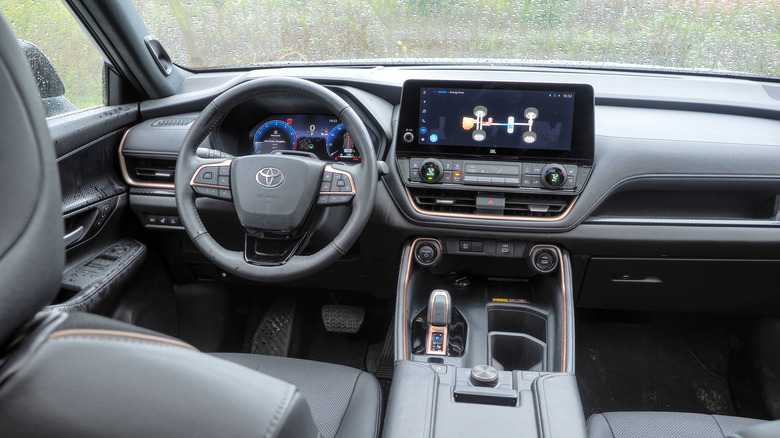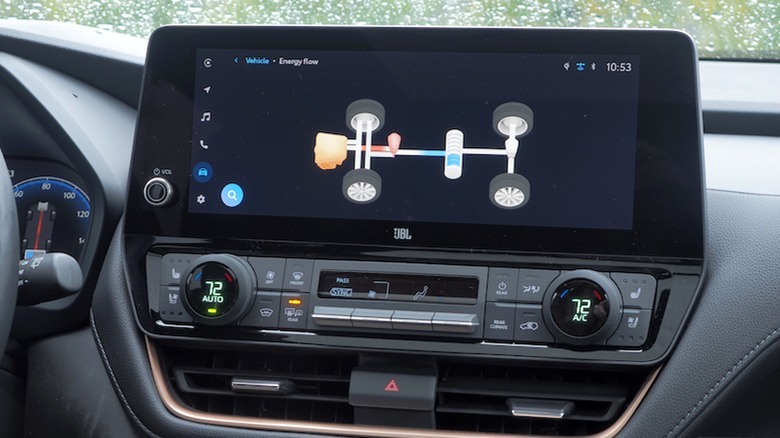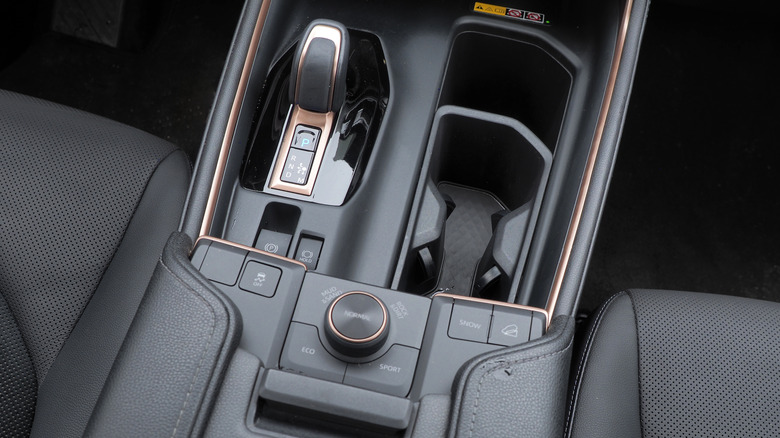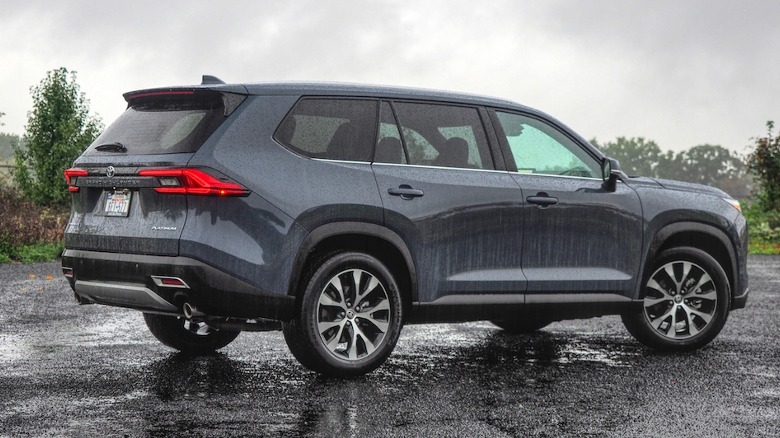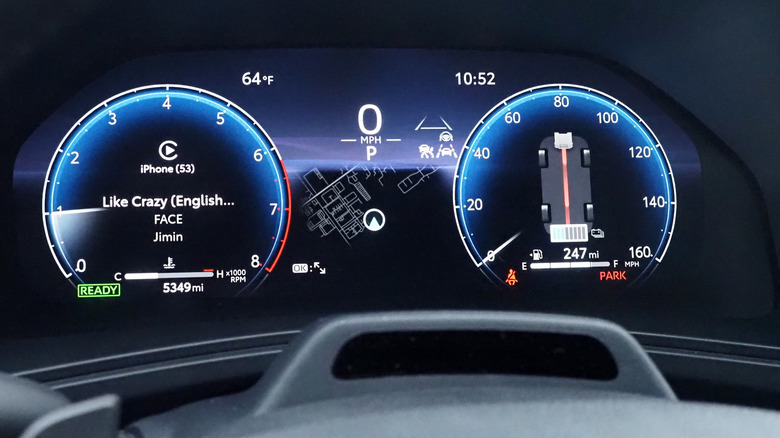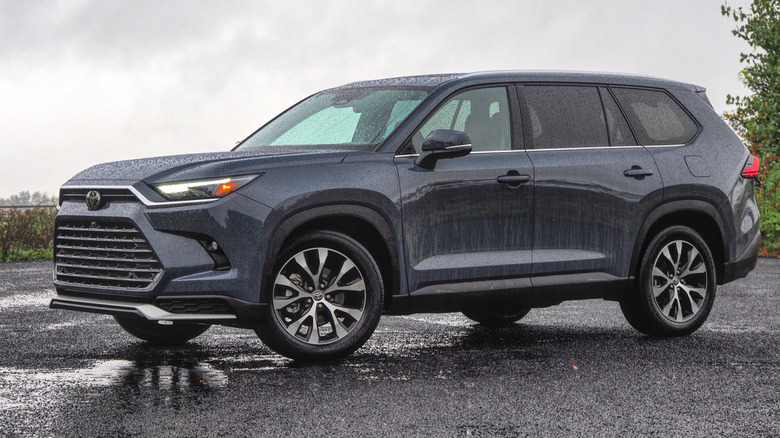2024 Toyota Grand Highlander Review: Three-Row SUV Is Bigger And Better As A Hybrid
- Adult-scaled in all three rows
- Sizable cargo capacity even with a full passenger roster
- Optional Hybrid Max engine is unexpectedly potent
- Solid levels of equipment and comfort tech
- Premium starting price only gets more expensive with options
- Can't have 8 seats and Hybrid Max engine
- Corners sedately, as you might expect
Big SUVs are big business, but not every three-row family hauler is created equal. Just because they're billed as regular seats doesn't necessarily mean the rearmost accommodation is going to be passenger friendly: particularly if you want to bring not only seven or eight adult-sized people but their luggage, too. Enter beefy fellas like the 2024 Toyota Grand Highlander.
Though it might share part of its name with the existing, popular — and also three-row packing — 2024 Highlander, the new Grand Highlander is a fresh addition to Toyota's forecourts. It promises not only space but two optional flavors of electrification, a little go-anywhere flexibility, and hauling capabilities more akin to a truck than an SUV.
It's not an inexpensive SUV, but Toyota seems to be doing that intentionally. The line-up kicks off with the 2024 Grand Highlander XLE, skipping the automaker's usual cheaper options, at $43,070 (plus $1,395 destination). Still, you should probably budget more on top of that for the best SUV experience.
Bigger and meaner-looking
Where the Highlander's aesthetic has softened in its latest generation — all sculpted curves and a sprinkling of chrome — the 2024 Grand Highlander eschews such fripperies. Its hard lines, upright fascia, and slab-sided proportions echo Toyota's truck design language and do nothing to hide its considerable dimensions.
At just over 201 inches long and 78 inches wide, it's about half a foot longer than a standard Highlander and two inches wider. The 8 inches of ground clearance are the same. 18-inch wheels are standard on the entry trim, stepping up to 20-inch versions in a variety of finishes on other models. It's a testament to the Grand Highlander's overall scale that they don't exactly look large even then.
All trims get a power liftgate — foot-activated on some models — along with LED lighting front and back. A panoramic moonroof is optional across the board, while roof rails are standard. Toyota's paint options do have a couple of brighter finishes, including a handsome blue and an almost bright red.
Three engines, two hybrids, and one driver's choice
Toyota offers three engines on the Grand Highlander, two of which are electrified. The entry power plant is a 2.4-liter turbocharged four-cylinder with 265 horsepower and 310 lb-ft of torque. An eight-speed automatic transmission is standard, as is front-wheel drive; all-wheel drive is a $1,600 option.
A step up from that takes you to the first hybrid, from $44,670 (plus destination), pairing a 2.5-liter four-cylinder with an electric motor for a combined 245 horsepower and 175 lb-ft of torque. Again, front-wheel drive comes standard, with all-wheel drive a $1,175 upgrade. It's Toyota's frugality play, trading power for up to 36 mpg combined, and just as we found in our 2024 Grand Highlander first drive it's probably the right engine for most buyers.
Top of the line, though, is the Grand Highlander Hybrid Max. It coaxes 362 horsepower and 400 lb-ft of torque out of its combined electrification and 2.4-liter turbocharged four-cylinder gas engine. All-wheel drive and a six-speed automatic transmission are standard, with pricing from $54,040 for the Limited and $58,125 for the Platinum trim (both before destination).
Do you want frugal or do you want fun?
While the economy or the affordability of the other two engines clearly have their appeal, the Hybrid Max makes its own compelling argument from the get-go. A quick stab of the gas pedal shows this is a big SUV that can hustle, surging ahead in a way quite unlike most three-row family fare.
Hit the first corner and, admittedly, the almost 5,000-pound curb weight is a solid reminder that the (capable) brakes are your friends. Toyota doesn't equip the Grand Highlander with adaptive dampers or air suspension, and so while there's a Sport mode (alongside Eco, Normal, Snow, Mud & Sand, and Rock & Dirt) the default is dialed in to comfortable compliance rather than anything too firm. The big SUV holds its own in the turns, level and comfortable for those onboard, but definitely doesn't encourage naughtiness.
The resulting economy falls somewhere in the middle of the drivetrain trio. Toyota quotes 26 mpg in the city, 27 mpg on the highway, and 27 mpg combined (versus 20/26/22 mpg respectively for the base, non-electrified engine, and 36/32/34 mpg respectively for the mid-tier hybrid). My own 22 mpg probably says more about my heavy right foot and predominantly urban journeys.
Adult-scale in all three rows
Toyota's regular Highlander isn't exactly small inside. The Grand Highlander's enlargements are particularly noticeable in the rearmost seats, where three-row SUVs usually end up feeling most pinched. 33.5 inches of legroom, combined with decent headroom from the taper-free roofline, mean adults needn't be too grumpy about finding themselves back there.
The first and second rows are positively capacious, meanwhile. Seven seats is the Grand Highlander's standard configuration, with an eight seat option on the base and regular hybrid models. This swaps the comfortable captain's chairs in the second row with a three-seater bench. It's not available with the Hybrid Max engine.
What the top-spec hybrid does offer, at least if you're willing to pay up, is some genuinely Lexus-style luxury. Think leather on the steering wheel to match the seats, a 10-inch head-up display, a digital rearview mirror, and both heating and ventilation for the second row seats.
A sober and sensible dashboard
Toyota's dashboard pleasingly avoids ditching all the buttons in favor of touchscreen controls. There are easily-twiddled HVAC knobs and toggles, a prime location for the camera shortcut — although sadly a 360-degree bird's eye view is a $600 option until you get to the flagship-spec Hybrid Max Platinum trim — and a dedicated volume control. A little bronze trim on the Max models lifts things somewhat, along with some textured plastic panels on the doors, but it's fairly sober overall.
The 12.3-inch infotainment system is Toyota's latest iteration, with capable voice control and much more user-friendly navigation than the dire version in earlier cars. There's wireless Apple CarPlay and Android Auto support, too. Most trims get a 12.3-inch digital cluster, too, with customizable graphics that also change depending on drive mode.
Those modes are readily accessible with a dedicated knob and buttons in the armrest. Toyota, though, still leaves plenty of space for storage. In the front center console alone there are spots for two phones — one a wireless charging pad — two cupholders, a deeper nook ideally suited for bigger bottles or flasks, and a capacious cubby with a roller-top lid (the practicality of which is slightly dialed back by the two armrest panels making it narrower than it could've been).
Massively practical
The practicality continues further back. Toyota says there's a total of 13 cup and bottle holders, raising legitimate questions about the dehydration fears of the average American family. Seven USB-C ports and two 12V outlets are spread around the cabin, and all but the base trims get two 120V AC outlets (up to 1,500W shared). Tri-zone climate control is standard, too.
As for the trunk, you'd expect big things given the Grand Highlander's footprint, and Toyota doesn't disappoint. With all seats up, there's 20 cu-ft of space: a third more than in the regular Highlander. Drop the third row and that expands to 57.9 cu-ft; lower the second row — which is a little tricky — and there's 97.5 cu-ft to fill.
That's more, in total, than a three-row Sequoia offers and less than 4 cu-ft behind the maximum cargo space in a 2024 Sienna minivan. The Grand Highlander's base engine and the Hybrid Max are both rated for up to 5,000 pounds of towing (the regular hybrid is rated lower, at 3,500 pounds, as on the Sienna). There, the Sequoia remains king, with around 9,000 pounds of tow rating depending on the drivetrain and trim.
Plenty of safety, plenty of warranty
Toyota Safety Sense 3.0 is standard across the board. That includes pre-collision emergency braking with pedestrian detection, lane departure alert with steering assist, lane tracing assist, road sign assist, and adaptive cruise control. Every Grand Highlander trim gets blind spot warnings with rear cross-traffic alerts, too, and all but the cheapest versions have from and rear parking sensors with auto-braking.
That's a healthy portfolio, and so is the Toyota's warranty coverage. Along with the 3 year/36,000 mile basic warranty, there's a 60 month/60,000 powertrain warranty. Both electrified versions get a 96 month/100,000 mile hybrid system warranty on top of that (and, in so-called CA Emission states, 120 months/150,000 miles of hybrid battery coverage).
Finally, there's ToyotaCare, which includes the scheduled maintenance for the first two years or 25,000 miles. It also throws in 24/7 roadside assistance, with coverage there for two years or unlimited miles.
2024 Toyota Grand Highlander Verdict
All that takes a little of the sting out of the sticker price, though as three-row SUVs go, the Grand Highlander still isn't cheap. Mazda's stylish and surprisingly fun-to-drive 2024 CX-90 starts at under $40k (albeit before destination), and its hybrid version is cheaper than the Toyota too, though it's down in third row legroom and trunk space. A Kia Telluride starts even cheaper still, but again it can't compete with the Grand Highlander when it comes to spaciousness.
The truth of the matter is, if you really do demand three rows of actually adult-friendly space then your options are pretty limited. On top of that, things only get more expensive if you want fun along with your full-scale seating. The Hybrid Max drivetrain is undoubtedly the Grand Highlander at its most charming, but then you're looking at over $55k including destination. Suddenly an Audi Q7 is within spitting distance, and while that may not match the Toyota on space, maybe your passengers can suffer a little in exchange for four rings on the grille?
Realistically, though, the market for the Grand Highlander exists because — regardless of whether or not you think modern vehicles are "too big" already — there are some people who genuinely require space for a whole lot of adults. While a minivan like the Sienna could well do the trick there, the SUV's towing capacity and design probably give it an edge. Living the Grand Highlander life in Hybrid Max style will cost you, but its excess pays dividends if you can't compromise on legroom and cargo in your three-row SUV.
